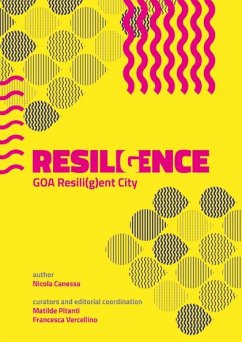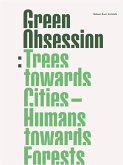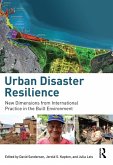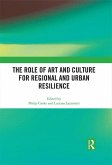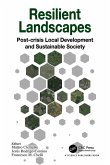The Resili(g)ence publication is part of the outputs produced within the European project KAAU, Knowledge Alliance for Advanced Urbanism (www.ka-au.net), Erasmus + program, and consists of two volumes: the first Resili(g)ence Intelligent Cities / Resilient Landscapes offers reflections on the general framework and on the theme of resilience applied to intelligent cities and the landscape, while the second volume GOA Resili(g)ent City, analyses the case study of Genoa.
RESILI(G)ENCE is a combined word, created by Manuel Gausa, merging the words resilience and intelligence. Intelligence is intended not only as the artificial but also as the human one, though undoubtedly today the world of BigData and OpenData can help the better understand of the city and its dynamics. Resilience, instead, is a term derived from the materials science and indicates the property that some materials have to maintain their structure or to regain its original shape after being subjected to crushing or deformation. The history of making the city of Genoa safe from floods is ancient history. And complex, very complex. It is the story of the wrong relationship between the river and the city, between nature and the urban and industrial development of the capital, between the flow of watercourses and their covering and cementing of the banks and beds of streams. It is perhaps one of the paradigmatic examples of the senselessness of man's choices towards his environment. But it is also the story of the delays of politics and institutions, of bureaucracies, of the system of public works in our country: of an Italy more attentive to formal respect for rules than for the rules of nature. In the midst of this history there are the disasters, floods, the dead, the injured, the damage of the flooding of the Bisagno torrent, which with its 30 km cuts the city from north to south, in one of the most built up areas of Italy, to reach the sea in the Foce district.
RESILI(G)ENCE is a combined word, created by Manuel Gausa, merging the words resilience and intelligence. Intelligence is intended not only as the artificial but also as the human one, though undoubtedly today the world of BigData and OpenData can help the better understand of the city and its dynamics. Resilience, instead, is a term derived from the materials science and indicates the property that some materials have to maintain their structure or to regain its original shape after being subjected to crushing or deformation. The history of making the city of Genoa safe from floods is ancient history. And complex, very complex. It is the story of the wrong relationship between the river and the city, between nature and the urban and industrial development of the capital, between the flow of watercourses and their covering and cementing of the banks and beds of streams. It is perhaps one of the paradigmatic examples of the senselessness of man's choices towards his environment. But it is also the story of the delays of politics and institutions, of bureaucracies, of the system of public works in our country: of an Italy more attentive to formal respect for rules than for the rules of nature. In the midst of this history there are the disasters, floods, the dead, the injured, the damage of the flooding of the Bisagno torrent, which with its 30 km cuts the city from north to south, in one of the most built up areas of Italy, to reach the sea in the Foce district.
Dieser Download kann aus rechtlichen Gründen nur mit Rechnungsadresse in A, D ausgeliefert werden.

